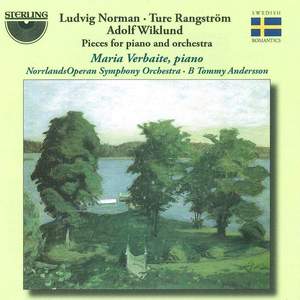Ludvig Norman's musical talent was obvious already in his younger teenage. He studied music theory with the composer Adolf Fredrik Lindblad, and piano with the Dutch-born pianist Jan van Boom. The concert piece for Piano and orchestra was composed in 1850 while studying in Leipzig. One can certainly hear the impression the 19 year old Norman got from Robert Schumann, but yet we meet a young, promising Swedish composer who is skilful at instrumentation with a sure sense of form.
Ture Rangström's music can be characterized as dramatic and suggestive with wide contrasts. He is absolutely one of the most original Swedish composers of all time. The Ballad for piano and orchestra was composed in 10 days in the origial key of F minor but was never performed in this version. 28 years later he revised it and transponded it to E minor and made rather major alterations. How much we don't know as the original score has not been found, maybe destroyed by the composers himself.
Adolf Wiklund studied in Stockholm and got a degree as an organist and also took lessons in composition and Piano. After some 9 years in Paris and Berlin he moved back to Stockholm where he became conductor of the Royal Opera. His Concert piece for piano and orchestra has Opus 1 and was composed in his first year abroad. The detailed and virtuosic piano part with extensive cascades of chordal figurations disclose that Wiklund was himself a brilliant pianist.





